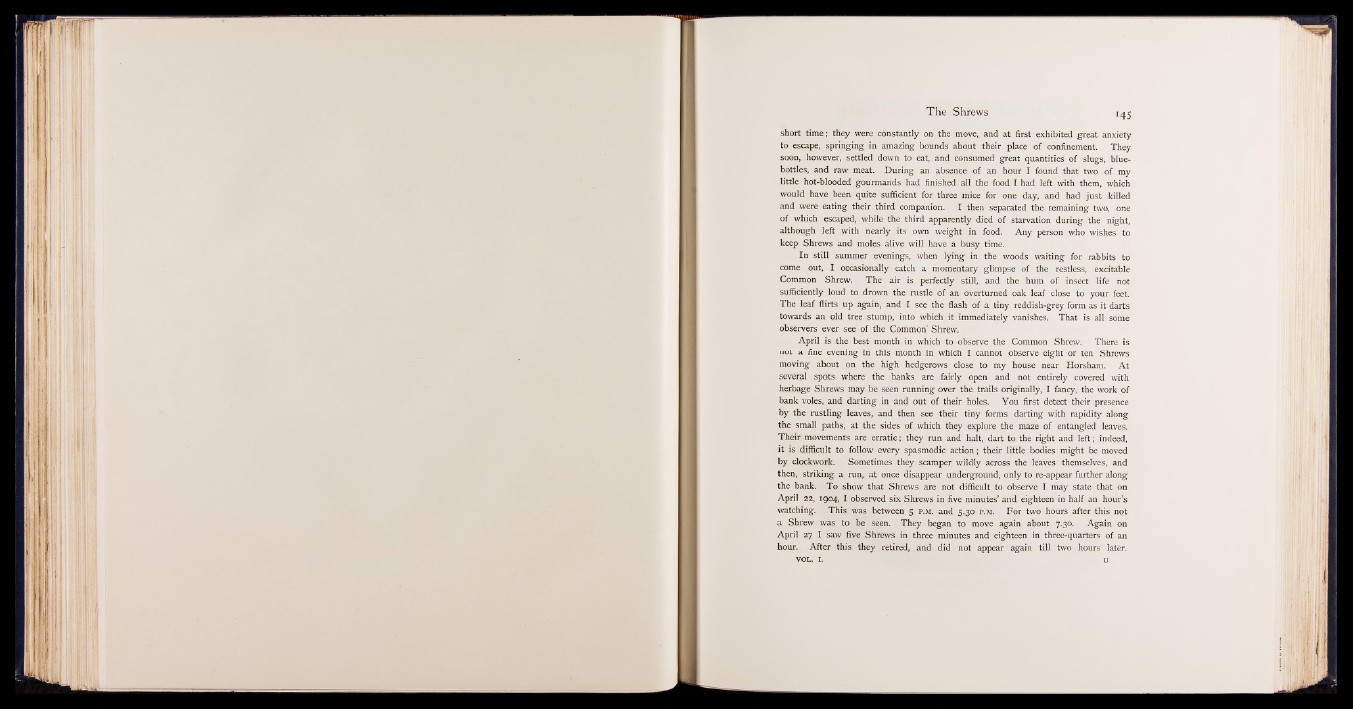
The Shrews 145
short time; they were constantly on the move,, and at first exhibited great anxiety
to escape, springing in amazing bounds about their place of confinement. They
soon, however, settled down to eat, and consumed great quantities of slugs, bluebottles,
and raw meat. During an absence of an hour I found that two of my
little hot-blooded gourmands had finished all the food I had left with them, which
would have been quite sufficient for three mice for one day, and had just killed
and were eating their third companion. I then separated the remaining two, one
of which escaped, while the third apparently died of starvation during the night,
although left with nearly its own weight in food. Any person who wishes to
keep Shrews and moles alive will have a busy time.
In still summer evenings, when lying in the woods waiting for rabbits to
come out, I occasionally catch a momentary glimpse of the restless, excitable
Common Shrew. The air is perfectly still, and the hum of insect life not
sufficiently loud to drown the rustle of an overturned oak leaf close to your feet.
The leaf flirts up again, and I see the flash of a tiny reddish-grey form as it darts
towards an old tree stump, into which it immediately vanishes. That is all some
observers ever see of the Common' Shrew.
April is the best month in which to observe the Common Shrew. There is
not a fine evening in this month in which I cannot observe eight or ten Shrews
moving about on the high hedgerows close to my house near Horsham. At
several spots where the banks are fairly open and not entirely covered with
herbage Shrews may be seen running over the trails originally, I fancy, the work of
bank voles, and darting in and out of their holes. You first detect their presence
by the rustling leaves, and then see their tiny forms darting with rapidity along
the small paths, at the sides of which they explore the maze of entangled leaves.
Their movements are erratic; they run and halt, dart to the right and left; indeed,
it is difficult to follow every spasmodic action; their little bodies might be moved
by clockwork. Sometimes they scamper wildly across the leaves themselves, and
then, striking a run, at once disappear underground, only to re-appear further along
the bank. To show that Shrews are not difficult to observe I may state that on
April 22, 1904, I observed six Shrews in five minutes’ and eighteen in half an hour’s
watching. This was between 5 p .m . and 5.30 p .m . For two hours after this not
a Shrew was to be seen. They began to move again about 7.30. Again on
April 27 I saw five Shrews in three minutes and eighteen in three-quarters of an
hour. After this they retired, and did not appear again till two hours later.
v o l . 1. u